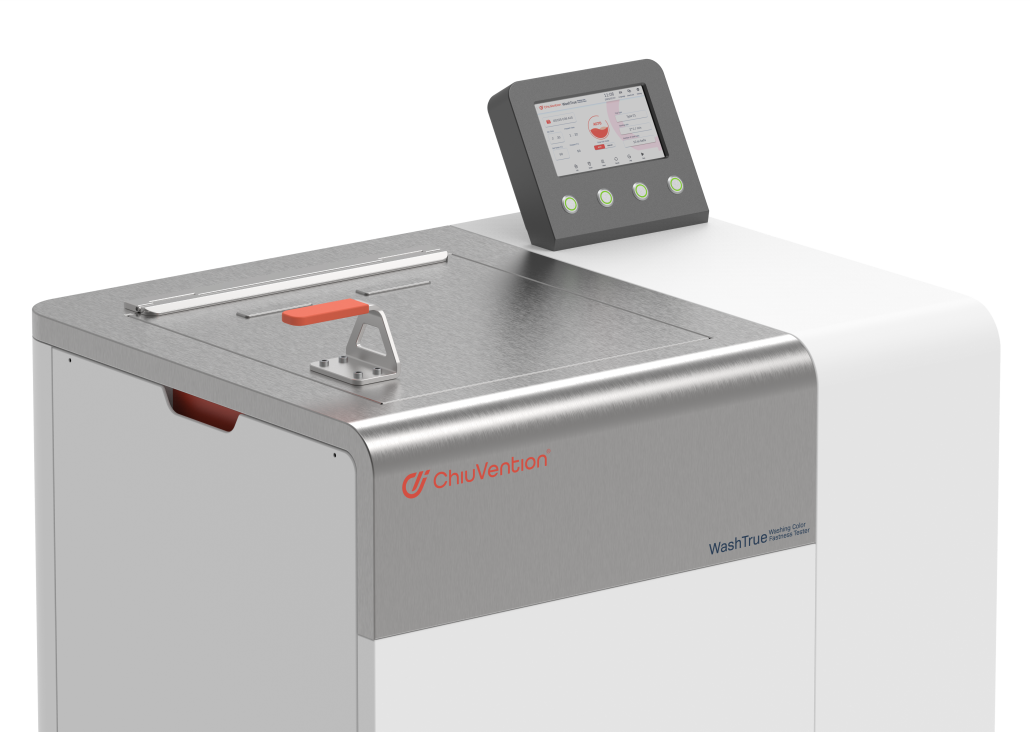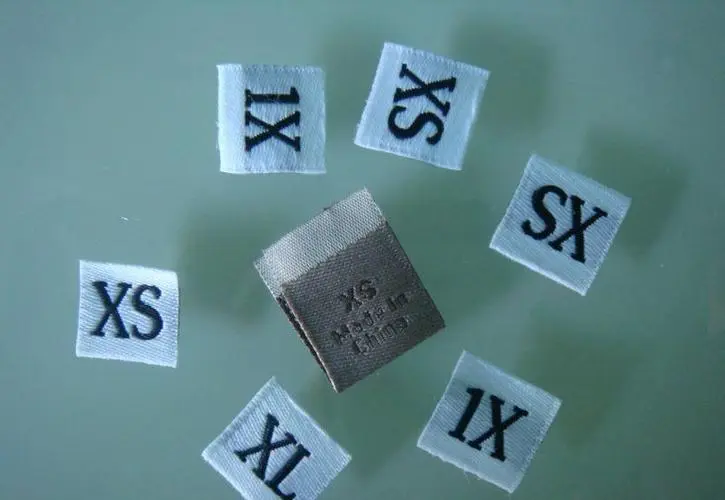The test simulates how textiles keep their color. It does so under different conditions. Many types of colour fastness tests exist. These include soap, water, sweat, and light resistance. But, the tests differ in how they sample. Different staff take samples differently, even with the same test method. Habits, judgment, and other factors affect their approach. This will also lead to some difference in the test results.
Classification of colour fastness items
We group common color fastness tests into three types: water bath, pressure, and light.
Water bath
This type shows color fastness to wash, dry cleaning, etc. We stir test samples in a water bath. The main point of sampling is to take all the colors.
Pressure type
This type shows color fastness to water and sweat. We test these samples under the specified pressure with full contact with the lining. The rule is that all colors need to touch all types of lining. The requirement is stricter than for the water bath type.
Light type
The light type represents light fastness and light and sweat fastness. The size of such test samples depends on the instrument used. The width is generally at least 15mm. Assess all colors in the sampling.
Sampling points of colour fastness to washing
The following is an example of colour fastness to washing. It summarises the key points of sampling for colour fastness. The test should first consider the color fastness to washing. It should focus on lining fabrics. Take GB/T 3921-2008 as an example. This standard says the lining fabric can be multi-fibre or two single-fibre.
Which lining fabrics include:
(1)The fabric is for 40℃ and 50℃ tests. In some cases, it’s for 60℃ tests. These test temperatures must be in the test report.
(2) Multi-fibre interlining fabrics without wool and vinyl (for some tests at 60°C and all tests at 95°C).
(3)The single interlining fabrics include cotton, wool, viscose, nylon, polyester, acrylic, linen, silk, and vinyl. Test centers prefer multi-fiber lining. It has tougher standards than single-fiber lining.
Different sampling methods for colour fastness to washing test
The following is an example of a test for multi-fibre lining fabric. We use the colour fastness to washing test method. It’s for detailed analysis of different sample types.
1. Solid colour samples
Someone cuts the sample randomly along the front of the fabric. This is according to the standard size requirements. Cut the fabric in either the warp or weft direction. Cut the sample from a smooth, evenly dyed piece at least 15cm from the fabric edge. This ensures uniform test results across the whole surface. Make sure to cut the test sample and original sample along the same warp or weft.
2. Colour woven samples
By the standard sample size rules, the sample must include all the colors. If it cannot, base the amount of sampling on the proportion and sample size.
3. Printing samples
These products are characterized by a rich colour. Printed samples include small prints, large prints, inter-colour stripes and so on. The basic sampling principle is to take all the colors on the sample. Pay attention to keep the same color around the sample. This is for comparing to the original sample rating. If a sample can’t contain all the colors, you can increase the number of samples. Or, you can use the proportion of each color to determine the number of samples. Give priority to assessing the dark part of the test. The following is a detailed analysis of various types of samples.
①Single small cycle printing
Sample a complete print to check for color differences. Factors like dye mix, printing method, and fabric type can affect how patterns look on the same cloth. Cut the sampling to match the printing situation. But, keep the same color around the sample. This is for a test after rating the comparison sample.
② No cycle irregular full of small prints
This type of sample color is complex. Before sampling, observe the sample carefully. Pick a dyeing that is a uniform and representative of the place to cut. The main, usually dark parts are colorful. A sample can’t contain all the colors, so make several test samples. The original and test samples must have consistent color. They should not differ in color. This will make it easier to compare their ratings after the color fastness to washing test.
③Large print without cycle
In the samples sent by customers for examination, some have big margins and large prints. These samples are not the same colour for each pattern. A sample can’t cover all the colours. So, we prioritize the deeper colours when cutting samples. Also, to account for the proportion of each color, take a certain proportion of samples. This step can’t just cut the dark part. In testing, there may be a shift from light to dark.
④Large circular prints
This type of sample is usually richer in colour, but it is cyclic. Simply cut on one of the looped patterns. If one sample cycle cannot meet the test and original samples, then you need two cycles. But, first you need to cut before the two cycles’ color comparison. This prevents the same flower’s color difference between the two cycles. If a sample can’t contain all the colors, cut a bigger sample. This ensures that we can measure the color of the sample.
⑤ Intercolour Stripe Printing Samples
To include all the colors of the stripes, you should take samples within the specified test size. The test for color fastness to washing is a rolling test. You can take the sample in any direction except toward the interstripes. Just be sure to capture all the colors. If a sample can’t have all the colors, you can increase the number of copies. Or, you can use the color proportions to decide the sample size. Give priority to the darker parts of the test.
4. Dark and light colour gradient dyeing samples
These samples are generally from light to dark or dark to light. They show the natural change in color. Usually there are two or more gradient colours. When sampling, look for uniformity in the dark and light colours. Be careful to avoid the middle of the color gradient. This part of the color is usually not even or representative. It can easily affect the test results.
5. Embroidery and appliqué samples
Threads connect embroidery, appliqué, and chevron samples to the backing fabric. The threads are uneven. But, the washing resistance test is dynamic. It does not affect the test results. The sampling should include all turning, embroidery, and backing parts. You should cut the sample with care. This will ensure that the appliqué, turning, and small parts can’t come off during color fastness to washing testing.
6. Yarn and loose fibre
When the sample is for yarn or loose fibers, the lab’s conditions can be woven into the yarn. This is determined by how the fabric is sampled. If the yarn or loose fibers cannot be woven into a fabric, they account for half of the lining’s weight. You can twist the yarn into a sandy bundle. The mass of the yarn or loose fibers is about half of the total lining fabric’s mass. Then, the lining fabric is sewn together for the test.
7. Ribbons, labels and other samples
There are greater than the lining fabric and less than the lining fabric two kinds. A sample has all the colors on the webbing. If the sample is larger than the lining, trim it. If the sample is smaller, splice in more pieces to match the lining’s size.
Cautions
(1) You must take the sample for washing color fastness from the front of the fabric or garment. This is the test surface.
(2) Take the sample’s size from the standard. If it’s too small, you can splice it
(3) When sampling, pay attention to keep the specimen’s color the same as the original. This is after the test rating.
(4) Avoid samples that are easy to fall off during the test. This prevents the sample from falling off during the test.
For more information on textile testing methods/standards
or textile testing machines, contact us:
What’s App: +86 180 2511 4082
Tel: +86 769 2329 4842
Fax: +86 769 2329 4860
Email: medium@chiuvention.com



